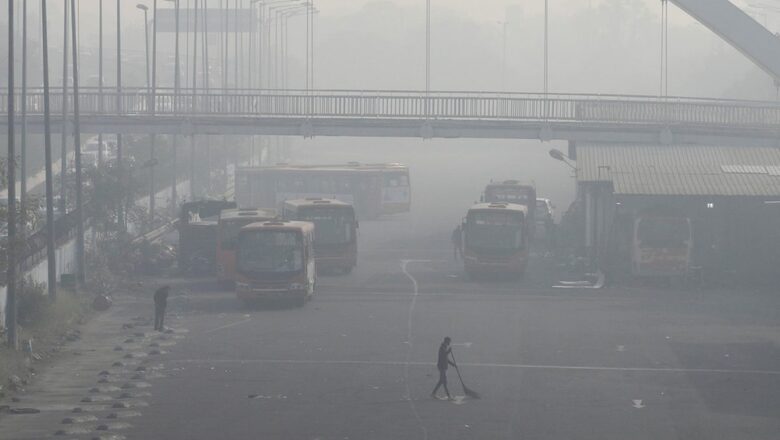
views
With a change in wind direction, pollution from five districts in the national capital region (NCR) ? Rohtak, Jhajjar, Sonepat, Baghpat and Ghaziabad ? is the highest contributor to deteriorating air quality in Delhi.
The situation is expected to deteriorate over the next five days with increased biomass burning incidents predicted in the neighbouring paddy-growing states, as per the early warning forecasting model of the union ministry of earth sciences.
While currently the contribution of fumes from farm fires in Punjab and Haryana to Delhi’s air is still low – 3.29% (as of Friday) ? it is expected to go up to 10%-12% on the fifth day from now, the forecasting system has predicted, which is right after Diwali, when firecracker bursting, despite a blanket ban, is likely to add heavy fumes.
According to scientists of the Indian Institute of Tropical Meteorology (IITM), Pune, who developed this real-time pollution monitoring model ? decision support system (DSS) ? last year to help identify the contribution from various pollution sources for informed decision-making by enforcement agencies in Delhi-NCR, the change in wind direction to north-northwesterly has the fumes from these five districts, known for its heavy industrial pollution traveling to Delhi.
?It is during this time of the year when the wind direction changes from south-south easterlies (as the monsoon withdraws) to north-northwesterly that the pollution from the region starts accumulating in Delhi, which combined with its own local pollution leads to a drop in air quality. The pollution contribution from these districts is likely to go up to 20%-22% over the next five days and at the same time combine with fumes from increased farm fires incidents as well as post-Diwali pollution, which may lead to a major spike on overall pollution levels in Delhi triggering a smog episode,? said a senior scientist, who didn?t wish to be named.
Some of these five districts such as Rohtak, Baghpat and Ghaziabad are known for being the most polluted cities in the region owing to continuing use of dirty fuels in industries, higher volume of diesel -run vehicles and other combustion sources. There has been little improvement in these sectors, even as the Commission for Air Quality Management (CAQM) for Delhi-NCR and adjoining states has set specific targets to cut down on emissions for each of these cities.
While the air quality as on Friday afternoon was in the higher end of the poor category, it is likely to enter ?very poor? zone on Saturday, as per the early warning forecast.
Also, the Centre for Science and Environment (CSE) had on Thursday warned of conditions turning ripe for a severe smog episode to begin from Diwali night.
Read all the Latest India News here




















Comments
0 comment